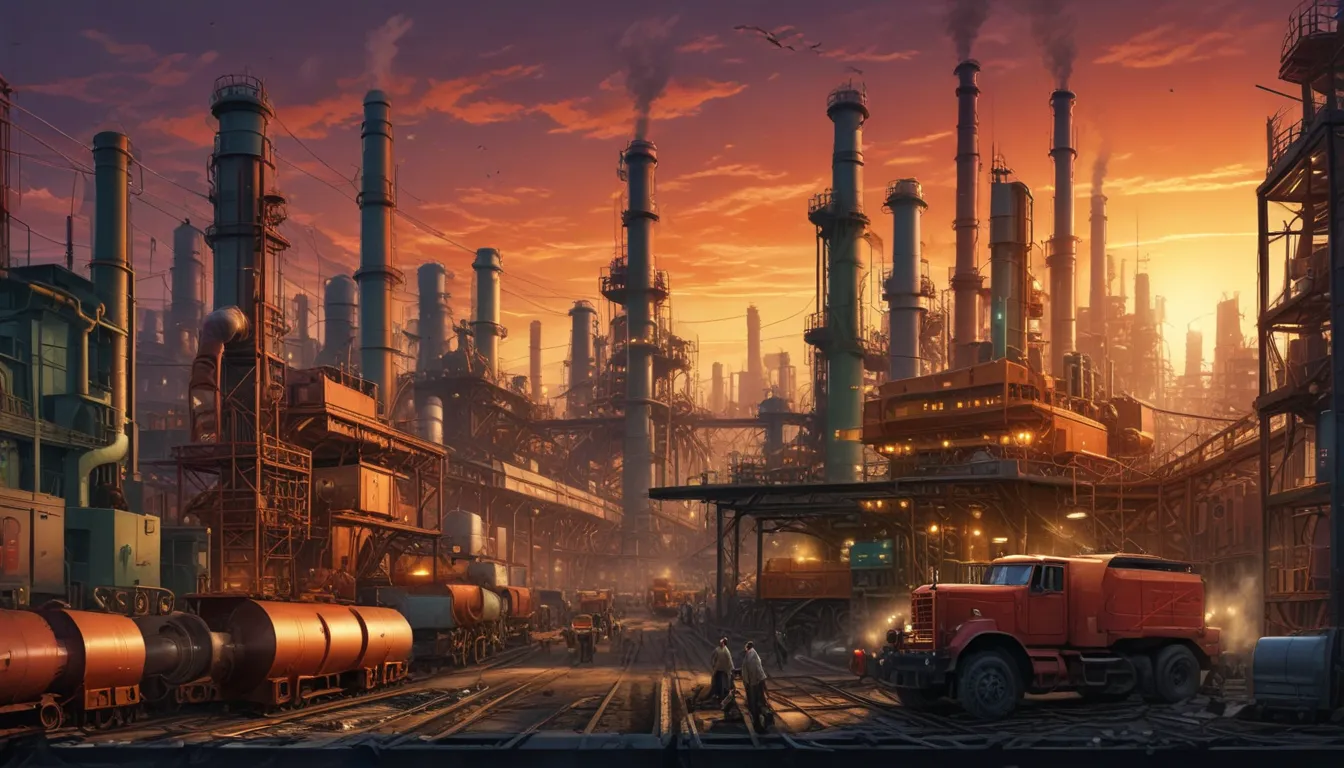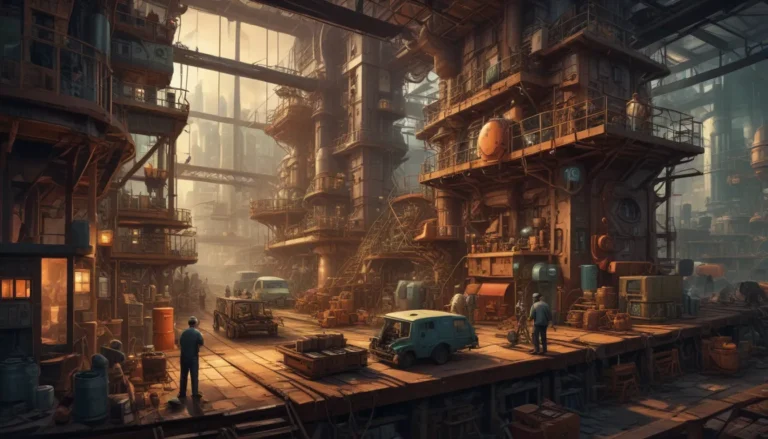A Note About Images: The images used in our articles are for illustration purposes only and may not exactly match the content. They are meant to engage readers, but the text should be relied upon for accurate information.
In the realm of economics, secondary industries play a pivotal role in shaping the global landscape, influencing trade, and driving development. These industries encompass a diverse array of activities, including manufacturing, construction, utilities, and transportation. While primary industries focus on extracting raw materials, secondary industries take these materials and transform them into finished goods that cater to the needs of consumers.
Unveiling the World of Secondary Industries: 12 Astonishing Facts
Let’s embark on a journey to explore the intriguing realm of secondary industries and uncover twelve astonishing facts that illuminate their significance and influence. From their contribution to job creation to their role in technological advancements, secondary industries have silently molded the modern world. Let’s dive right in and gain a newfound appreciation for the pivotal role secondary industries play in our daily lives.
Key Takeaways
- Secondary industries are essential for job creation, economic growth, and the production of everyday goods. These industries are at the forefront of technological innovation and sustainability efforts, shaping our world and fostering prosperity in local communities.
The Importance of Secondary Industries
The crucial role of secondary industries lies in their ability to transform raw materials into finished products. This sector encompasses a wide range of activities, including manufacturing, construction, and utilities, that add value to raw materials.
Job Creation
One of the significant contributions of secondary industries is their role as major job creators. From assembly line workers to skilled technicians, these industries provide employment opportunities for millions worldwide, helping to reduce unemployment rates.
Economic Impact
The growth of secondary industries has a profound impact on the overall economy. Their expansion stimulates economic development, boosts productivity, and contributes to the overall GDP growth of countries.
Technological Advancements
Secondary industries are at the forefront of innovation, driving technological advancements that revolutionize production processes. From automated manufacturing to the integration of robotics and artificial intelligence, these industries continuously push the boundaries of technology.
Global Trade
Secondary industries play a crucial role in international trade, producing goods that are traded across borders. Their contribution to global trade balances fosters economic relationships between nations and drives economic growth.
Sustainability Efforts
In an increasingly eco-conscious world, secondary industries are prioritizing sustainability initiatives. They are adopting eco-friendly practices, reducing waste, and utilizing renewable energy sources to minimize their environmental impact.
Supply Chain Management
Efficient supply chain management is key to the success of secondary industries. Managing raw material sourcing, production processes, and product distribution ensures a seamless flow of goods and services.
Collaboration with Primary Industries
Secondary industries rely on primary industries for the supply of raw materials. This symbiotic relationship drives economic growth, ensuring a steady flow of resources essential for production.
Infrastructure Development
The contribution of secondary industries to infrastructure development is significant. Construction activities, transportation networks, and utilities are vital for supporting industry growth and enhancing connectivity.
Impact on Local Communities
Secondary industries are crucial for stimulating economic growth at a grassroots level. By generating employment opportunities and supporting social development initiatives, these industries contribute to the well-being of local communities.
Resilience and Adaptability
Secondary industries have demonstrated resilience and adaptability in the face of economic challenges and technological disruptions. They evolve to meet market demands, ensuring their survival and growth in a dynamic environment.
Contribution to GDP
The output of secondary industries makes a substantial contribution to the Gross Domestic Product (GDP) of countries worldwide. Their revenue generation directly impacts the economic performance of nations.
As we unravel the astonishing facts about secondary industries, their pivotal role in driving economic growth, technological innovation, and job creation becomes evident. Through their contribution to prosperity and development, secondary industries have become indispensable in shaping our society.
Embracing the Role of Secondary Industries in Our Lives
The next time you marvel at a manufactured product or benefit from infrastructure development, take a moment to acknowledge the significant role that secondary industries play in making it possible. From enhancing our quality of life to fostering economic growth, these industries are the unsung heroes that underpin our daily experiences.
Conclusion: Shaping the Future Through Secondary Industries
In conclusion, secondary industries are the backbone of the modern economy, driving innovation, creating employment opportunities, and contributing to overall economic growth. From manufacturing to construction, these industries leave an indelible mark on our lives. The astonishing facts we’ve explored shed light on their importance and impact on society, highlighting the vital role they play in shaping our collective future.
FAQs About Secondary Industries
Q: What are secondary industries?
A: Secondary industries involve the processing or manufacturing of raw materials into finished products. They encompass sectors such as manufacturing, construction, and utilities.
Q: What is the role of secondary industries in the economy?
A: Secondary industries contribute to economic growth by adding value to raw materials, creating jobs, generating revenue, and driving technological advancements.
Q: How do secondary industries impact society?
A: Secondary industries play a crucial role in meeting consumer demands, improving infrastructure, and fostering economic development. They contribute to the overall well-being and standard of living of society.
Q: What are some examples of secondary industries?
A: Examples of secondary industries include automobile manufacturing, construction companies, textile factories, food processing plants, and electronics assembly plants.
Q: How has technology influenced secondary industries?
A: Technological advancements have revolutionized secondary industries, leading to increased productivity, automation, and more efficient production processes, resulting in higher-quality products and reduced costs.
Q: Are secondary industries sustainable?
A: The sustainability of secondary industries depends on various factors, including resource management, environmental impact, and social responsibility. Many industries are implementing sustainable practices to minimize their ecological footprint.
In our commitment to providing trustworthy and engaging content, we invite you to explore and learn with us. Each fact shared is contributed by users like you, ensuring a wealth of diverse insights and information. Our dedicated editors meticulously review each submission to maintain the highest standards of accuracy and reliability, guaranteeing that the facts we share are not only fascinating but also credible. Trust in our commitment to quality and authenticity as you delve into the captivating world of secondary industries.






